In the art of cooking, it is quite common for home cooks and professional chefs to have to perform repetitive and otherwise tedious tasks during the process of preparing ingredients for a meal, such as in the case of chopping vegetables or mashing tomatoes for a soup.
Through the wonders of modern technology, this sort of food processing no longer requires an excessive length of time or a large amount of physical exertion, with several differing machines having been invented to allow individuals to perform these tasks in a fraction of the time, and with far less effort.
Some of the best substitutes for a food processor are kitchen scissors and a shot glass, a hand grinder, a box grater, a mortar and pestle, a kitchen masher or potato masher, or a rolling pin. The best kitchen appliance substitutes for a food processor are a blender, stand mixer, kitchen grinder, kitchen chopper, or a coffee grinder.
Substituting the Food Processor
Despite the convenience and ease of use that is the entire purpose of a food processor, there exist certain circumstances or situations that may require this particular kitchen appliance to be returned to the shelves in favor of an entirely different machine or piece of kitchen equipment.
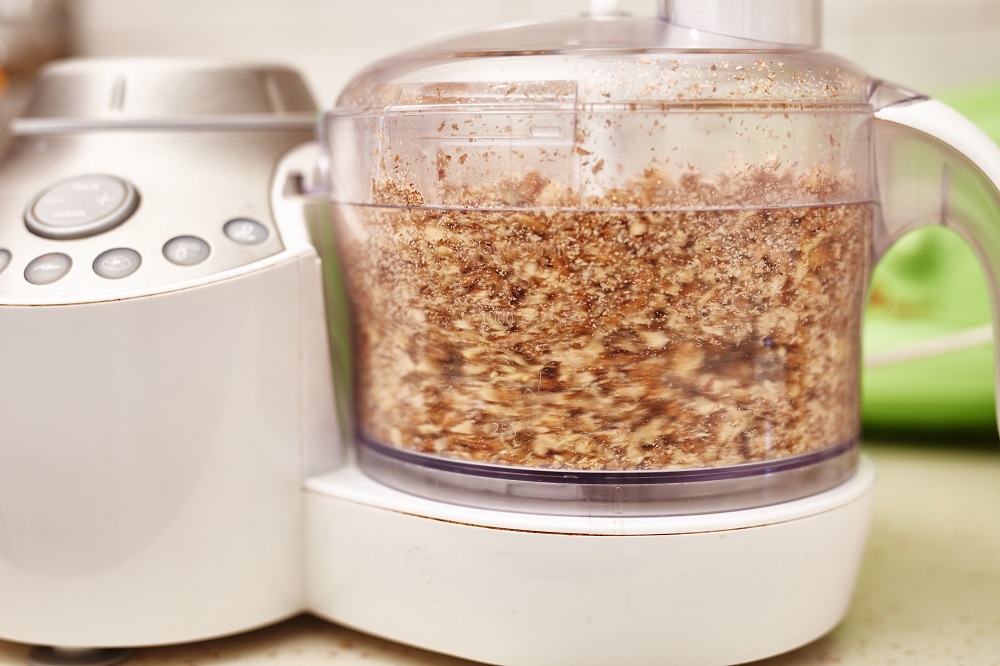
The particular kitchen appliance or piece of equipment required in order to properly substitute the food processor will depend on what particular purpose it was originally meant to serve as well as whether one wishes to use a manually operated implement or one primarily fueled through the use of electricity.
Why Would a Food Processor Require Substitution?
The particular circumstances or situations that may lead to the subsequent substitution of the food processor can be quite varying, with such things like a simple lack of availability or even a power interruption all necessitating that a suitable alternative to the food processor be found so as to continue preparation of a dish.
Other reasons behind the possible need to substitute the food processor could be an under powered motor of one’s food processor, a lack of suitable attachments for said food processor, the desire to lend a more traditional or authentic feeling to a recipe by way of doing things by hand, or even one simply being too lazy to retrieve their food processor from within the kitchen cupboards.
Regardless of the particular reasons behind why the food processor may need to be substituted during the preparation of a recipe, finding a suitable alternative should be rather easy and require very little extra effort.
Manually Operated Food Processor Substitutes
In instances where no electrical power is available or one simply wishes to experience the feeling of fully preparing a recipe entirely by hand, there are quite a few manually operated kitchen implements that may fulfill whatever processing needs one may have.
It is important to first identify what sort of culinary processing the ingredients of the recipe will require prior to choosing a suitable food processor substitute, such as in the case of vegetables needing to be macerated requiring a mortar and pestle, or small leaves being able to undergo dicing via a pair of scissors and a shot glass.
Kitchen Scissors and a Shot Glass
Only suitable for relatively small volumes of leaves or other thinly shaped ingredients, the use of a pair of scissors and a shot glass may act as a food processor substitute for the purposes of dicing or otherwise creating very thin pieces of an ingredient.
To do so, simply stuff whatever ingredients must be diced into the bottom of the shot glass, place the scissors in the opening and begin cutting rapidly, essentially cutting the ingredient into pieces in a rather quick and efficient manner.
This may also be performed with other containers of tubular shape wherein the scissors may rapidly open and close inside of, such as a suitably thin tumbler or flask, allowing individuals to substitute the dicing capabilities of a food processor in a low equipment situation.
Hand Grinder
Not to be confused with the power tool also referred to as hand grinder, the kitchen appliance hand grinder is shaped like a tube emplaced on a stand with an extruder on one end of the tube and an intake valve atop the other, all connected to a hand crank meant to be turned in a circular motion along the rear side of the machine.
A kitchen hand grinder is rather versatile in its uses, and is capable of performing a variety of tasks such as turning waste meat into more edible ground meat, pureeing or crushing vegetables and even extruding dough into pasta and noodles, making a kitchen hand grinder a truly excellent food processor substitute.
Because of this variety of uses, hand grinders have also been referred to by a number of other names, such as meat grinders or manual operated grinders, leading to some confusion among consumers.
Box Grater
Most commonly used for such purposes like grating cheese and the peels off vegetables, box graters are a hand-held or tabletop device usually used for their shredding capacity, wherein the sharpened and devoted surface of the metallic box will have ingredients repeatedly rubbed against it so as to dislodge and cut shreds of the ingredient in a quick and efficient manner.
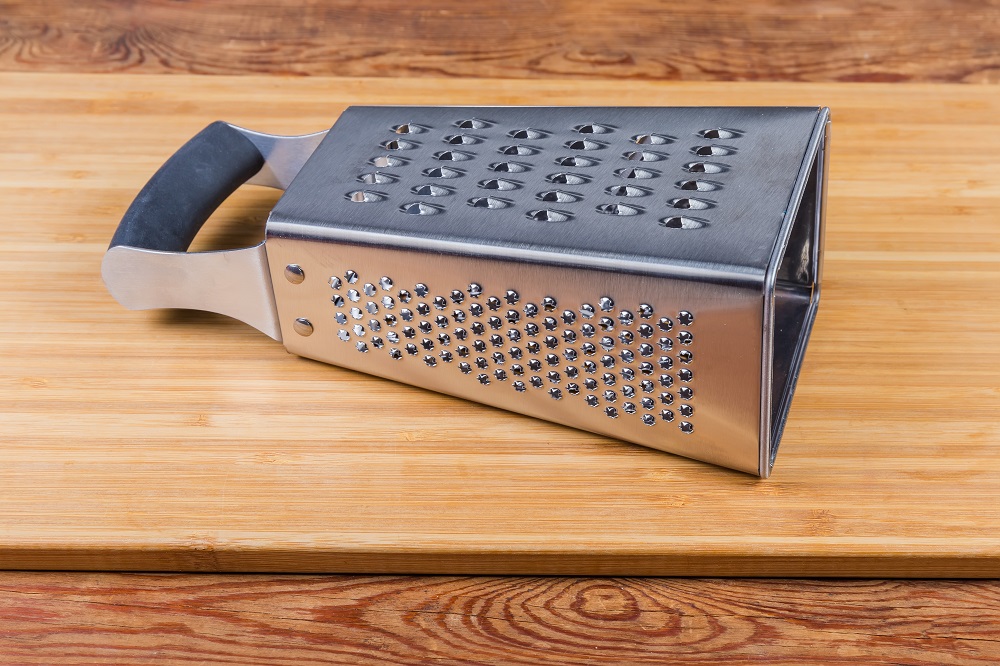
Box graters may be used to fulfill the purposes of shredding or grating food ingredients that would normally be processed in the same way by a food processor with a blade attachment, albeit with slightly more physical exertion required.
Nonetheless, box graters may rival the speed and customizability of a food processor if used in the proper manner, especially the sort of box graters with differing slicers or blades on different sides of the box.
Mortar and Pestle
An ancient tool not entirely reserved for its use in the kitchen, the mortar and pestle makes yet another excellent manually operated substitute to the food processor for the purposes of mashing or grinding up ingredients, especially of the more aromatic or lipid-rich vegetable kind.
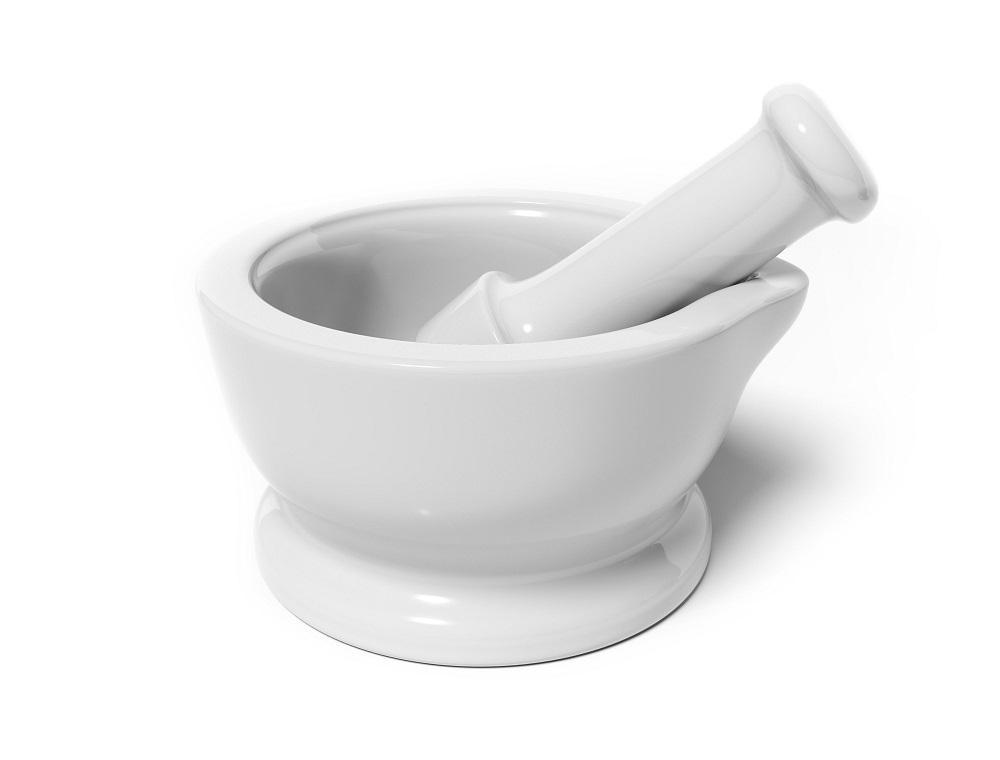
Mortar and pestle sets may come in varying sizes and materials, all of which will affect the speed and efficiency at which they are capable of processing ingredients, with smaller sized mortars requiring suitably smaller volumes of ingredients to be processed.
The mortar and pestle duo is best used as a substitute for the food processor’s mill attachment, as the repetitive pulverizing motion of the pestle is capable of drawing out the flavor and aroma compounds of herbs and nuts with similar effectiveness, though it may require considerably more time and physical force.
Kitchen Masher or Potato Masher
More commonly seen in the creation of mashed potato or egg salad, potato mashers or kitchen mashers are a long handled kitchen implement with a flat end of which possesses holes or openings interspersed throughout its length, allowing soft ingredients to be pushed through if sufficient enough force is applied.
Kitchen mashers may be used in the capacity of creating a puree or in any other purpose that requires a soft ingredient be mashed into a more shapeless form, such as one would when using the puree or mill attachment of a food processor appliance.
Rolling Pin
An excellent substitute for the dough hook that is occasionally packaged along side the more premium brands of food processor appliances, a rolling pin is the quintessential dough manipulation device that, unlike a food processor, may be used without the presence of electricity or any other source of power save for the chef’s own physical strength.
Rolling pins may entirely supplant the usage of a food processor for the purposes of aerating a dough or allowing it to form gluten through the use of physical manipulation, as well as prepares a sheaf of dough into the appropriate shape for creating certain types of pastries or pastas, something that even food processors are not always capable of.
Mechanically Operated Food Processor Substitutes
In situations where electrical power is available but the usage or presence of a food processor is not, using an alternative mechanically operated substitute machine should prove more than sufficient, depending on the original purposes of the food processor.
Keep in mind that each potential substitute to the food processor is meant to serve its own unique purpose and that the chef must first identify what sort of processing their ingredients must undergo prior to choosing a substitute machine.
Blender
Perhaps the most similar possible machine to a food processor, mechanically operated blenders usually feature a spinning rotor in the center with two or more blades attached so as to efficiently chop up any ingredient placed within its receptacle, all the while mixing the ingredients together with the use of the rotor’s rotational force.
Certain types of premium brand blenders can even make use of attachable modifications on the rotor so as to even further replicate the functions of a food processor, making a blender one of the best possible substitutes for a food processor in the capacity of cutting, mixing, kneading or pureeing.
Stand Mixer
Not to be confused with a hand mixer or other forms of kitchen mixer appliances, a stand mixer generally consists of a wide base with a small engine attached to one end that assists the function of a rotor with a detachable end.
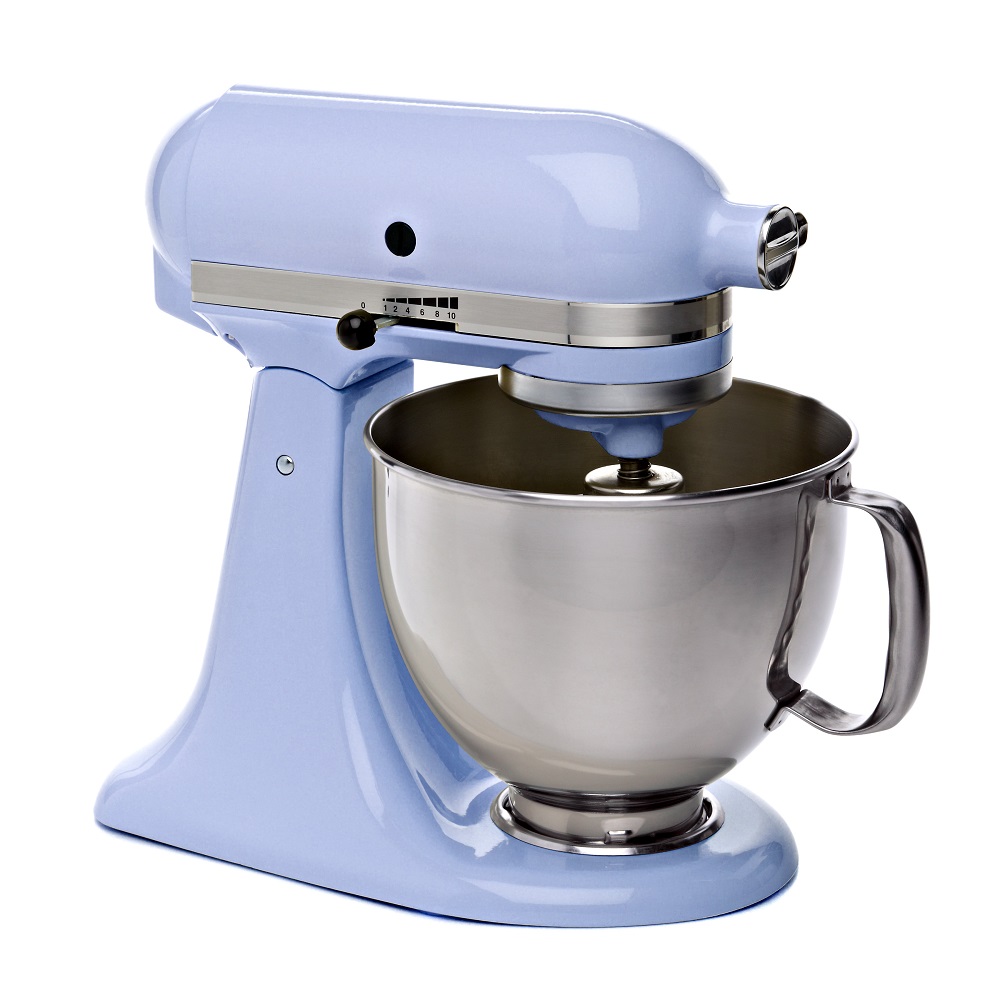
When activated, the stand mixer’s distal end will spin at varying levels of intensity and speed, whipping or otherwise churning whatever bowl of ingredients are placed beneath its mixing attachment.
Stand mixers work best as food processor substitutes in the capacity of kneading or aerating dough, frothing liquid ingredients, whipping liquid ingredients or even simply mixing heterogenous ingredients until the desired consistency is reached.
Kitchen Grinder
The automated version of a hand grinder, kitchen grinders are an electrically powered kitchen appliance primarily used for grinding small but hard objects like coffee beans, nuts or spice pods for the purposes of turning them into a fine or coarse powder, depending on the intensity of the grinder’s blades.
As a food processor substitute, kitchen grinders may act as a similarly automated alternative to the shredding or grating attachments normally found packaged alongside every food processor upon first purchase.
As such, a kitchen grinder appliance will perhaps be the most commonly used food processor substitute appliance that a chef can own, as the primary function of most food processors usually involves grinding or grating ingredients in a fast and effortless manner.
Kitchen Chopper
Either fully automated and electrically powered or used by the repetitive pushing of a depressor attached to its blades, a kitchen chopper fulfills the slicing, grinding or dicing functions of a food processor without the direct usage of a food processor itself.
Kitchen choppers generally function either in a blender-like method via use of a set of spinning blades, or through the repetitive up-and-down motion of a platform lined along the bottom with sharp edges so as to cut up any ingredients that are placed beneath it in the chopper’s receptacle.
Kitchen choppers may vary in power source, general function, or even method of chopping between brands and price ranges, and as such it is best to purchase one that is suitable for the volume of ingredients needed to be chopped as well as the level of convenience the chef desires to attain.
Coffee Grinder
Though not typically used for any purpose other than that of grinding up whole coffee beans, a coffee grinder may also be used as a food processor substitute in a pinch, so long as the required function of the substitute is simply that of a grinding or chopping capacity.
Care must be taken if choosing to use a coffee grinder as a food processor substitute, as the internal mechanisms and blades used in coffee grinders are usually more delicate than the tough and robust ones made for food processors, and as such using ingredients that are too hard may damage the coffee grinder internally.
References
1. Prakash, Sheela (15 March 2016). “A Guide to the Food Processor Blades and Discs You’re Not Using”. Kitchn. Apartment Therapy, LLC.
2. Katz, Solomon H.; Weaver, William Woys (2003). Katz and Weaver, Encyclopedia of Food and Culture: Food production to Nuts, Scribner 2003, pages 323-333. ISBN 9780684805665. Retrieved 10 / 01 / 2022
3. Valeria Orso, Alessandro Sperduti, and Luciano Gamberini. 2019. Integrating kitchen appliances to improve food quality and sustainability: the SIAF project. In Proceedings of the 12th ACM International Conference on PErvasive Technologies Related to Assistive Environments (PETRA ’19). Association for Computing Machinery, New York, NY, USA, 311–312. DOI:https://doi.org/10.1145/3316782.332154 8



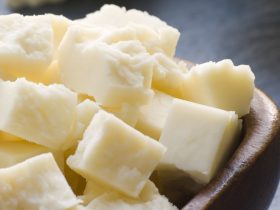

Hi, I'm Dom
Dom Eats was started to help other people fall in love with food. While cooking can feel intimidating, it doesn't have to be.